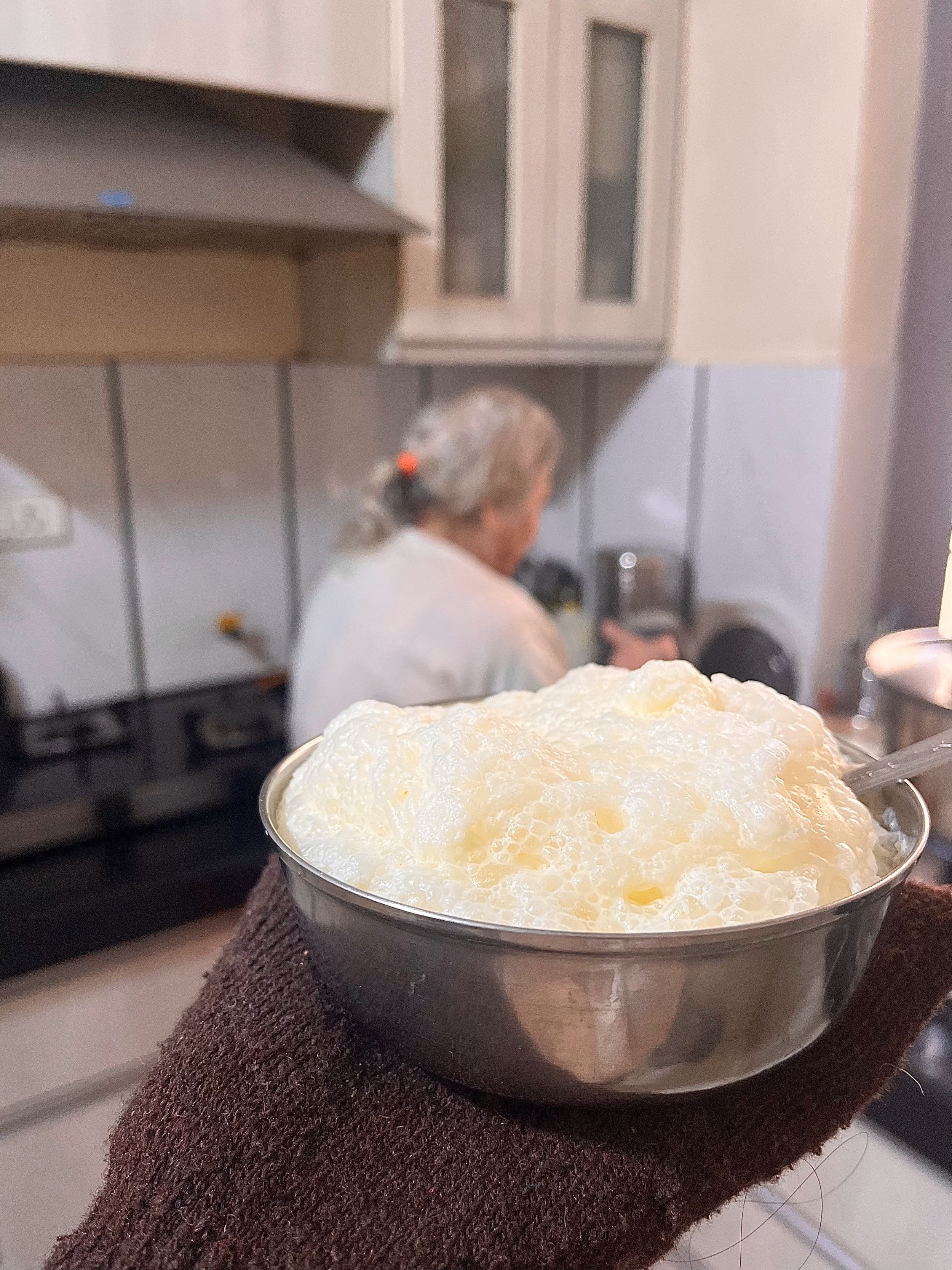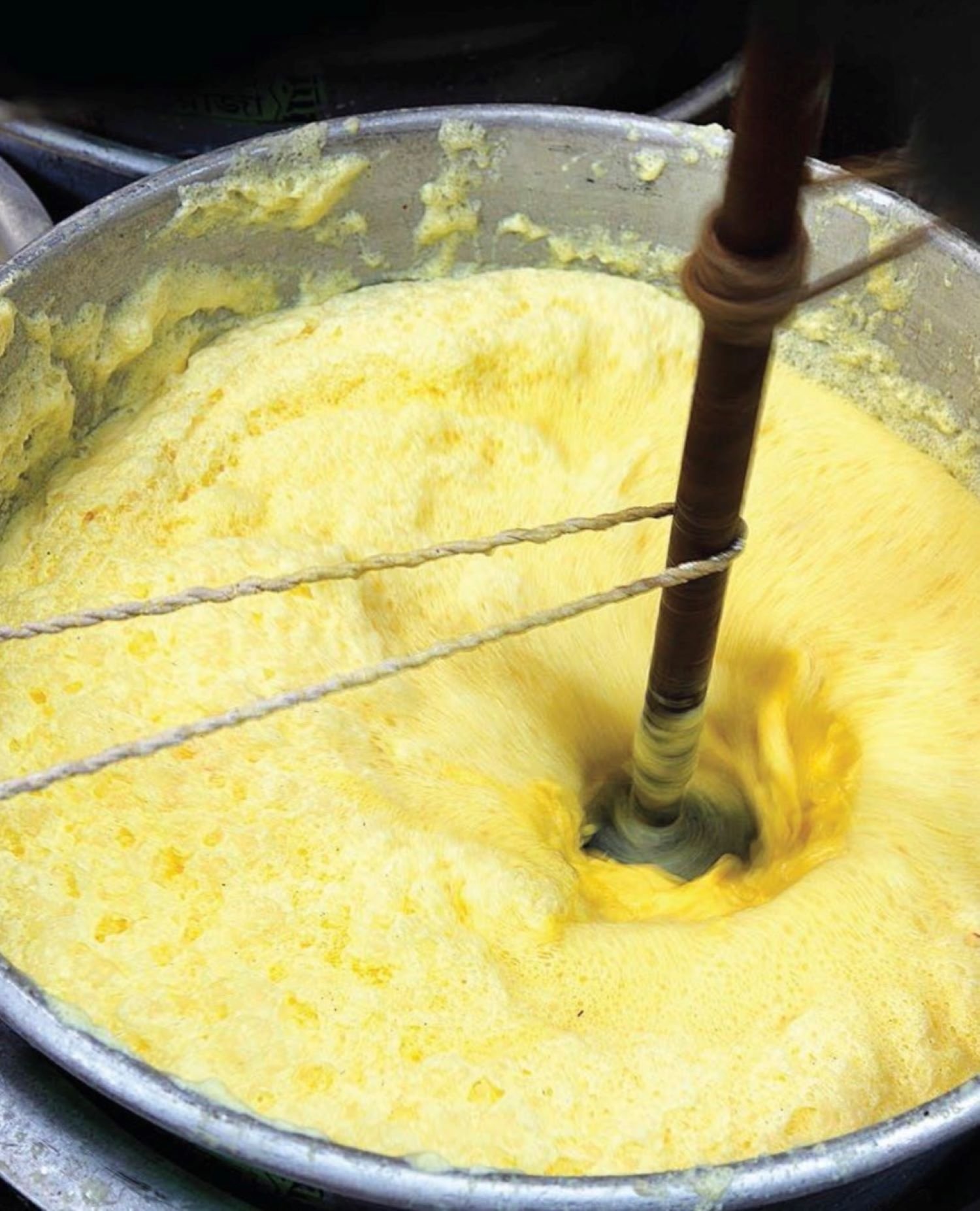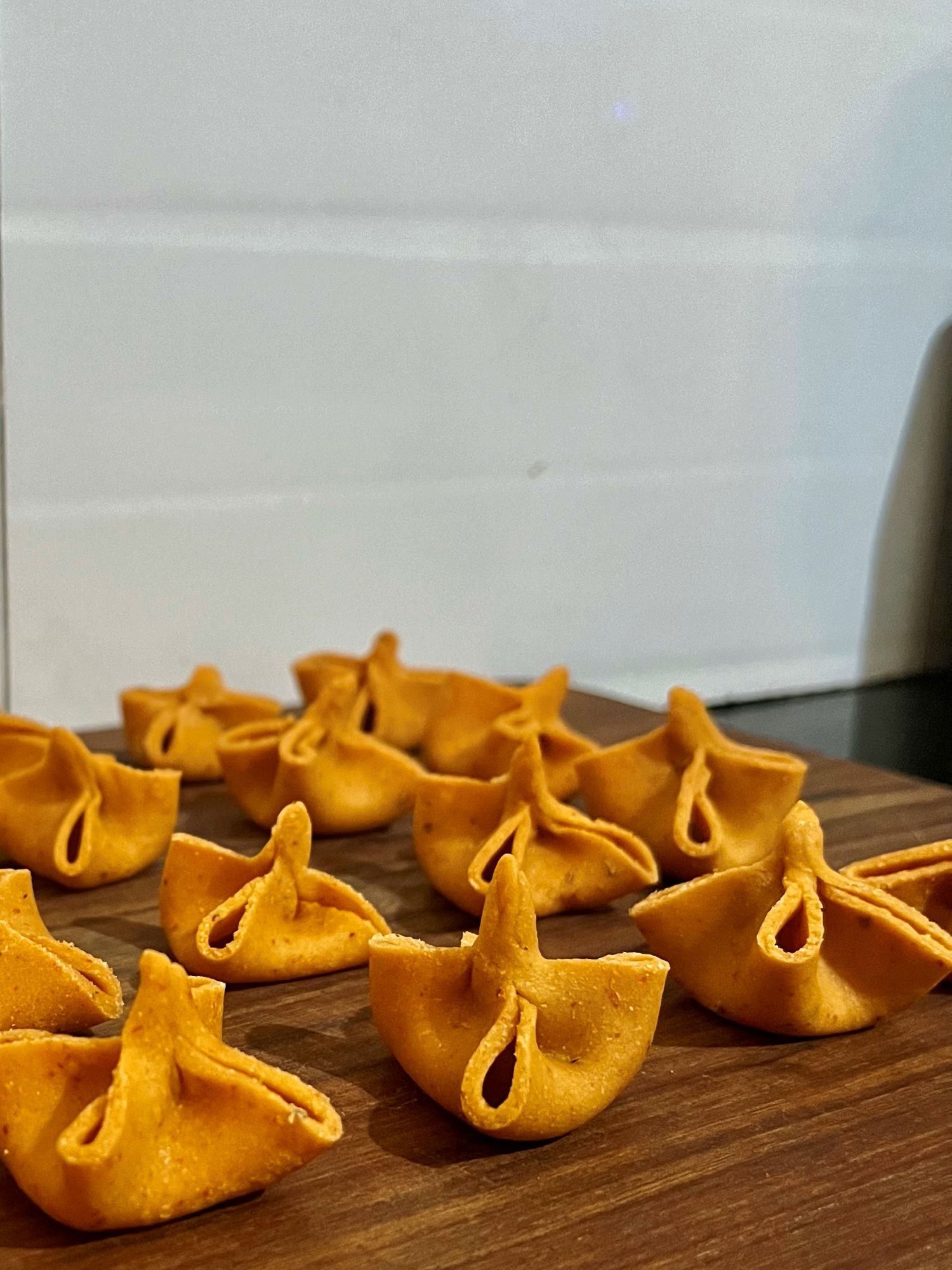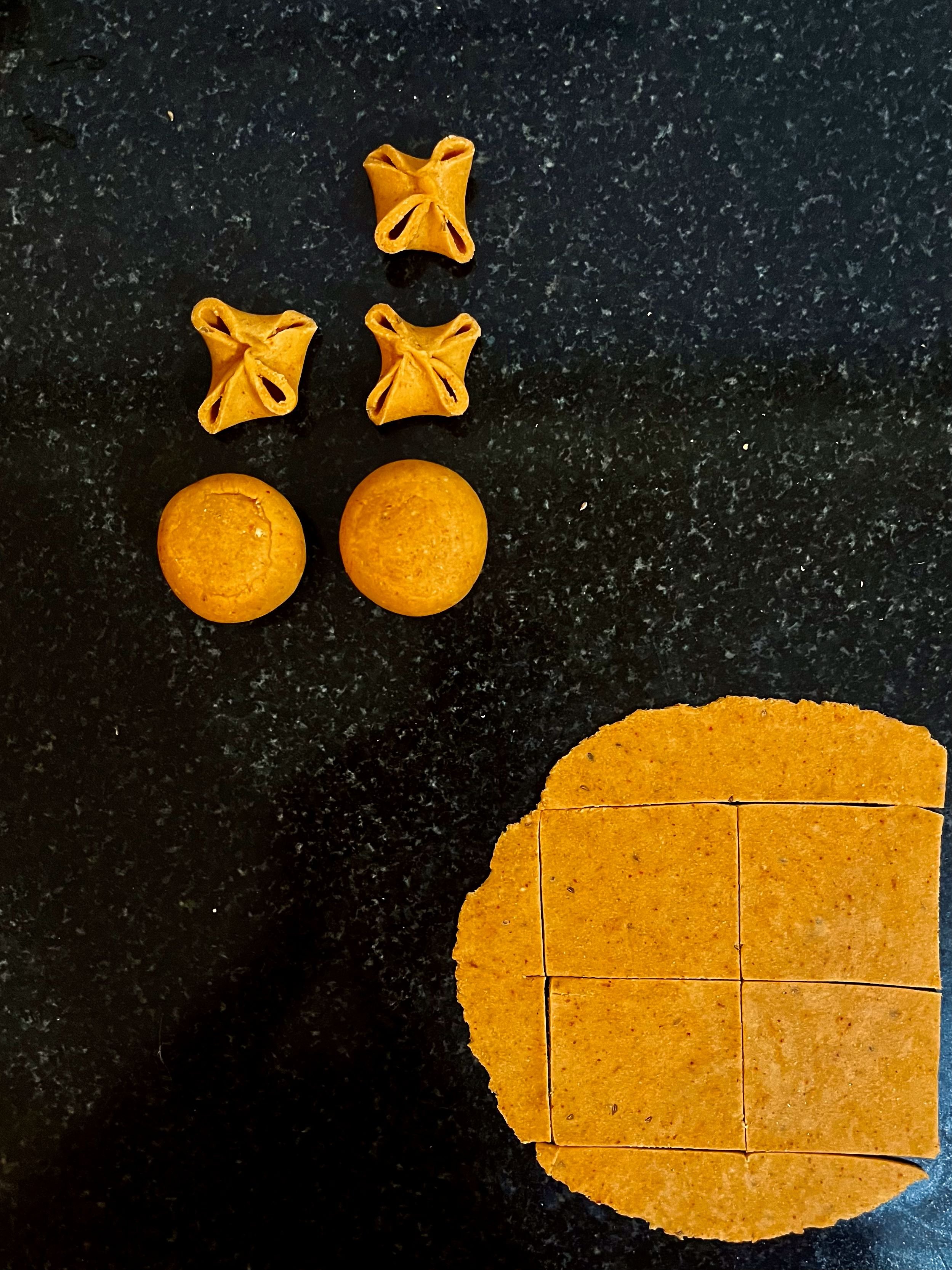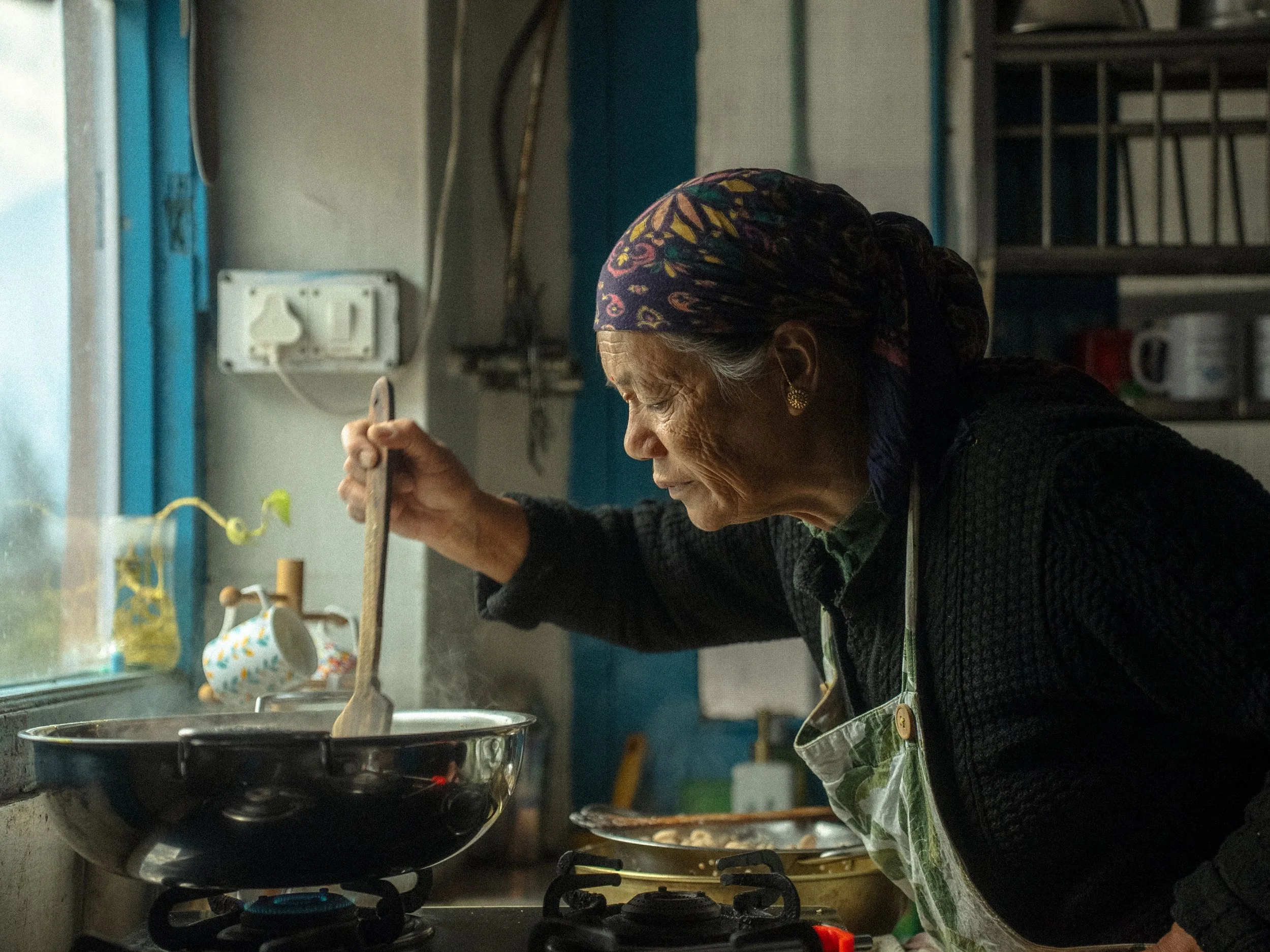The Cultural Extravagance of Sheherwali Cuisine
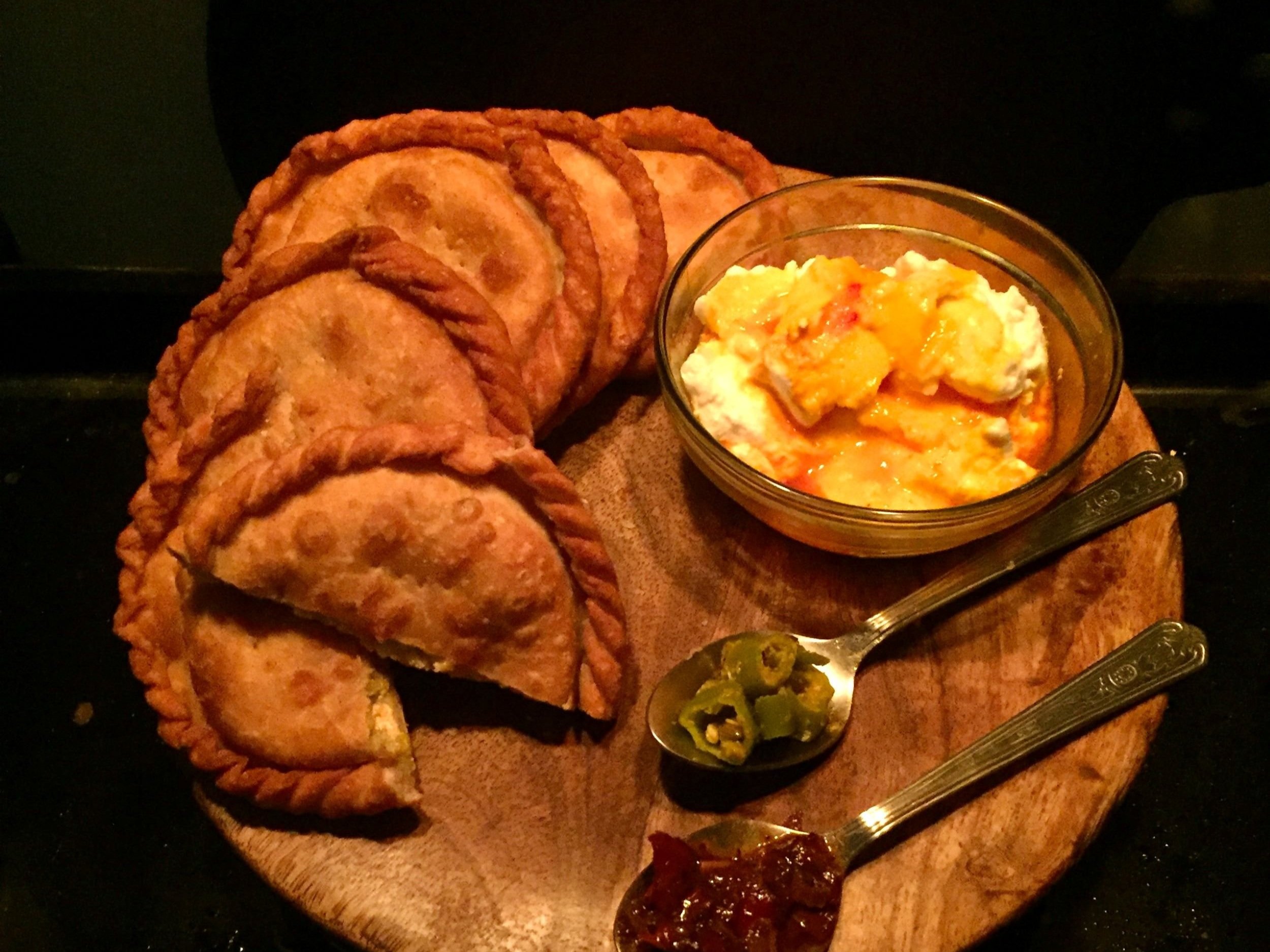
The Sheherwali community, established 300 years ago, embodies a unique lifestyle blending Rajasthan's princely traditions, Bengal's cultural nuances, and the influence of nawabs. But one must know a Sheherwali to truly truly experience its culinary glory, as this is a cuisine not found in any restaurants in the country.
Despite its historical and cultural significance, Sheherwali cuisine remains largely undocumented. Khushboo Jain explores the depths of her community’s cuisine, unveiling its unique recipes, and highlighting traditions that mark them as distinct.
In the quietness of the morning, as the clock strikes four, my grandmother, Bimbla Jain, rouses each member of the family. Despite the chilly embrace of North Indian winters, there's an undeniable anticipation in the air. This is the time of month when we savour the sweet frothy delight of nimas (pictured below), a cherished delicacy of the Sheherwali community made using full-fat milk, infused with saffron.
It is an exciting start to the day, and identical to mornings from my forefathers' generation: The concept of breakfast didn’t exist — instead, there would be three or four different kinds of mithai with a glass of milk. Given the opulent lifestyle of the time, even the daily mithai wasn’t the same.
This is just one example of the remarkable food practices of the Sheherwali community. The community’s history goes back 300 years when a few Jain families from the Marwar region of Rajasthan responded to the Nawab of Murshidabad’s invitation to settle in Azimganj and Jiaganj, twin towns on either side of the Bhagirathi river in Bengal. They travelled across the country to provide financial services as bankers, and thrived in their new roles. Their wealth, and community grew, and soon, the fertile Murshidabad plains became their home.
The cuisine combines Rajasthani, Bengali and Nawabi influences. Presented with Bengal’s year-round abundance of vegetables and fruit, they swiftly introduced these into their kitchen. On the side, they modified traditional Rajasthani recipes to include this abundance, while also adopting Bengali and Nawabi spices and cooking techniques within the matrix of Jain strictures. Gradually, this small community morphed into a culturally distinct group and came to be known as Sheherwalis by the Jains living outside Azimganj, referring to their urbane sophistication. This history is crucial to note, because there remains a lack of attention and documentation of their culture and culinary heritage.
Sheherwalis have a unique cuisine, one that speaks to their assimilation of a region’s socio-cultural fabric. Inspired by the Bengali sweet tooth, they also earned a well-deserved reputation for a sweet tooth of their own. “Meals often begin and end with sweets, with desserts like chhuare ka goli — a winter treat made with dry dates, mawa, nuts and lots of sugar,” my grandmother tells me.
Chhuare ki goli is a winter treat of dates, nuts, mawa, sugar and rose water, eaten at the end of a meal.
The goli contains an ingredient that is unique to the community’s cuisine: rose water. Whether in sweet treats, savoury delights, or festive feasts, kewra (rose water) is an assured ingredient. Its origins can be traced to the community’s horticulture roots, which is slowly declining today. In many homes, it is not uncommon to find a bottle of kewra that is over 100 years old. My family may have moved back to Rajasthan, but we continue to source our rose water exclusively from Murshidabad.
Saffron is another ingredient used widely in our dishes. Borrowed from the Bengali Nawabs, this spice brings a richer side to an otherwise lean, vegetarian cuisine.
Among the long list of accompaniments used within the cuisine, is kaatbel pachak, a digestive mouth-freshener made with stone apple, spices, black salt, cumin powder, roasted hing, and a touch of rock salt. This kaatbel pachak is often eaten with mathris and puris.
Sheherwali cuisine boasts a variety of unique dishes. Take the saloni mewa ki khichadi, a hearty rice dish of fragrant basmati cooked with a medley of dry fruits and nuts; each grain is infused with a burst of sweetness and crunch. The tender rice pairs harmoniously with the richness of mewa (dry fruits and nuts). This dish is often served with tempered gatta pulao — rice with chunks of baked besan; and maariya, a rice starch-water typically eaten in rural Bengal, but transformed with the addition of arhar dal (red gram), richly scented with garam masala.
Saloni mewa ki khichadi is a hearty rice dish with dried fruits and nuts, usually eaten with gatta pulao containing fried besan, and maariya, rice starch water with arhar dal.
Another gem is the delicate kheere ki kachori, with its crisp outer shell and refreshing cucumber filling; the perfect harmony of Rajasthani and Bengali influences. And of course, the most beloved of them all — the pitha. Impossibly thin circles of rice flour with a filling of roasted mawa. What elevates the sweet pitha is baphia, a savoury snack made with lentils, and a spice mix, beaten vigorously, and steamed like dumplings. It has a light and airy texture. Together, this combination delights both young and old alike.
Dal pithi is a regular spiced dal stew with wheat dumplings.
Beyond these culinary treasures, the Sheherwalis hold an unparalleled obsession with mangoes — from growing and eating them to cooking with them. We take immense pride in our mangoes, boasting no less than 108 varieties. This incredible variety is a result of the Sheherwali art of splicing mango saplings with those of other fragrant fruits and flowers to produce unique cultivars of mangoes, each one with a distinct flavour and character. The nimble hands of grandmothers and aunts in the community transform the humble mango into culinary masterpieces. At the heart of their mango-infused culinary journey is the raw mango kheer — raw mangoes are peeled and grated, and added to milk to create a velvety concoction, elevated with the addition of saffron.
The author’s grandmother, Bimbla Jain, prepping raw mangoes for use.
In each dish, the Sheherwali celebrates a profound connection with the land and its local produce. We revel in the earthy sweetness of jaggery, sourced from local sugarcane fields. The abundance of cucumbers in the fertile soil provide a refreshing crunch and cool respite from the sweltering heat. Aromatic spices, carefully procured from local bazaars, showcase the diversity of flavours the region has to offer.
This is a cuisine that cannot be found in restaurants or cookbooks. To truly partake in our culinary traditions in its most authentic form, one must enter the home of a Sheherwali family. It is through the sharing of these culinary treasures that Sheherwalis celebrate their heritage and create lasting connections around the dining table.
RECIPE FOR KHEERE KI KACHORI
(Makes 15 pieces)
Ingredients
1 kg cucumbers (kheera)
750 g hung curd
2 cups wheat flour (atta)
½ cup semolina (suji)
1 tbsp salt
2 tbsp roasted cumin powder
½ tbsp red chilli powder
½ tbsp black salt
¼ tbsp hing (asafoetida)
Ghee, for frying
Method
Wash, peel and grate cucumbers. Place the grated cucumbers on muslin cloth, add salt and squeeze out the water. Simultaneously, hang curd in a muslin cloth for about five hours to remove all water.
Mix the grated cucumber and hung curd together.
Add all the spices and set it aside.
Remember to add salt right before stuffing.
Knead a dough of wheat and semolina flour, salt, and ghee with water. Divide the dough into 30 sections. Roll the dough into 3-inch diameter circles. Place a little of the stuffing in the centre of the dough circle. Cover it with another circle. Seal all the edges by pressing the ends together in the style shown in the pictures. Using a fork, prick holes on only one side of the kachori.
Heat ghee or oil and deep-fry on medium heat until it turns golden brown.
Serve hot with chutney and lemon wedges or, as the Sheherwalis do, with a kutti mirchi achar (spicy, tart red chili pickle with no oil).
Khushboo Jain is a creatively inclined artist, actively writes, models, and serves as an art curator. Her broad interests extend to painting and cooking, driven by a deep fascination for cultures and history. Follow her on Instagram
ALSO ON GOYA
